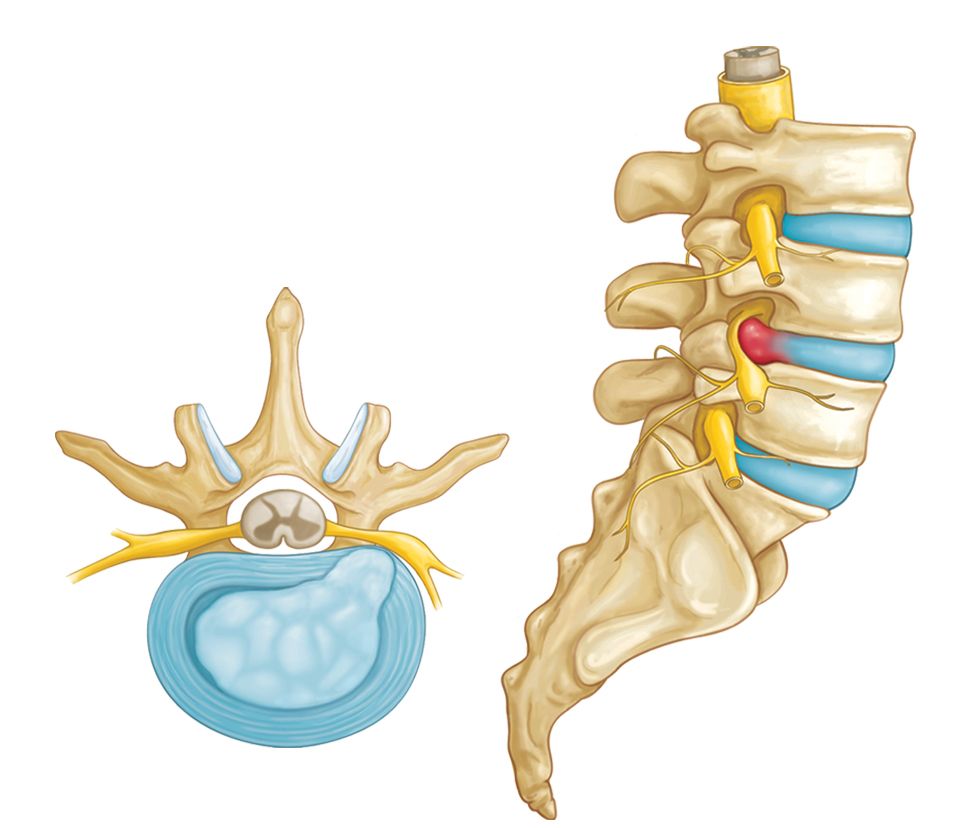In the third part of our series, we take a look at a very common cause of sciatica disc herniation. Also known as a disc bulge, disc prolapse, ruptured disc or slipped disc, this is an injury we as osteopaths see quite regularly.
The spine is made up of 24 individual bones called vertebrae. In between each vertebrae is a disc that acts as a shock absorber between the bones. Each disc is made of a connective tissue outer layer with a jelly substance in the middle. It is this jelly substance pushing out through the connective tissue that causes a herniated disc.
Disc herniations most commonly occur in the low back, and less commonly in the neck. They are caused by increased pressure in the back, so usually heavy lifting, twisting or a combination of both. Occasionally a herniated disc can occur with minimal effort if the disc has been weakened by stress put on the back over time.

Disc herniations usually cause pain in the area they occur as well as often pressing on nerves in the area. In the low back, the protruding disc can push on one of the nerves that form the sciatic nerve (that travels down the leg) and this is where pain down the leg comes from.
As osteopaths, we can’t “push” the disc back in, this is impossible. This form of disc injury usually heals with time, aided by treatment and rehabilitation. Very rarely is the herniation severe enough to warrant surgery. Osteopathic treatment involves minimising muscle tightness and pain (caused by the surrounding areas) and maximising movement, thus allowing the disc to heal as quickly as possible. We also prescribe exercises and other forms of rehabilitation. Please contact us at Lilydale if you have further questions or would like to make an appointment with an osteopath.